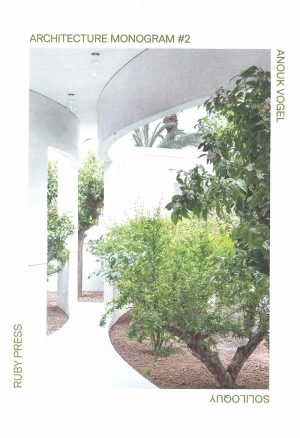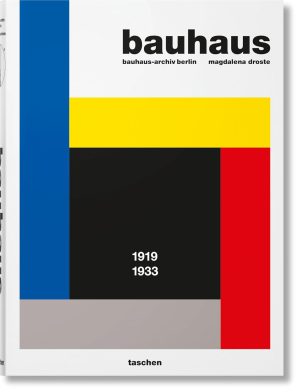KLAUS KINOLD. Architekturphotographien / Architectural Photographs
The work of Klaus Kinold, born 1939 in Essen, is part of a tradition of photography, and particularly of architectural photography. Architecture was one of the most important themes even of early photography — not least because it stood still. Initially this was an important characteristic, since exposure times were long. Thus began the affinity of photography with the documentary. Reality and representation were supposed to correspond. Quoting a statement by Roland Barthes, Kinold has referred to the still “mysterious bonus of confidence given to the documentary”. At a time when digital photographic and processing techniques make all sorts of manipulation possible, the now rare quality of reliability is assigned to this attitude. It was self-evident for Kinold to explore the period whose very name included the term objectivity — the New Objectivity (in German: Neue Sachlichkeit). The work of colleagues such as Werner Mantz, Hugo Schmolz, Arthur Koster and above all Albert Renger-Patzsch combined useful information and contemporary artistic expression. Walter Peterhans, photographer at the Bauhaus, called it the “magic of precision”. At the same time, Kinold did not let himself be confused by the special effects indulged in by some modernist artists. His photographs indicate the structure of the surfaces of a building, the spatial depth and the details concealed in its shadowed sections, the proportions in which they present themselves to the user. The accuracy of observation, the precision in detail, the translation of three-dimensional objects into a convincingly construed image are among the virtues of the architectural photographer Klaus Kinold. What takes precedence in his work is not the moment at which a thing suddenly reveals its essence, a lucky coincidence, but rather the condition that is considered to be essential, set also by the right photographic standpoint. For Kinold, who owed a great deal to his teacher Egon Eiermann at the Technische Hochschule in Karlsruhe, including in his capacity as a photographer, logic, purity and clarity went without saying. Accordingly, predominant in his work, we find photographs of buildings by architects whom he could expect to have such qualities: classic Modernists like Walter Gropius, Ludwig Mies van der Rohe, Le Corbusier and contemporaries like Alvar Aalto, Hans Dollgast, Herman Hertzberger, Louis Kahn, Karljosef Schattner, Rudolf Schwarz, Alvaro Siza. Architectural historian Wolfgang Pehnt, born 1931, has often reaped the benefits of insights gained from Kinolds photographic art. Pehnt has published monographs about German architecture since 1900 and about Expressionist architecture, but he has also written about numerous individual uvres. He formerly taught at the Ruhruniversitat Bochum.
Veste editoriale: Cartonato
Formato: 28×30
Pagine: 120
Immagini a colori: 112
Immagini b/n:
Lingua: D-GB
Anno: 2016
ISBN: 9783936681932
Potrebbero interessarti anche:
Prodotti correlati
-
In Offerta
BUILT by Valerio Olgiati
47,00 €Il prezzo originale era: 47,00 €.42,00 €Il prezzo attuale è: 42,00 €. Aggiungi al carrello -
ARCHITECTURE MONOGRAM #2: Anouk Vogel, Soliloquy
39,00 € Aggiungi al carrello -
ARCHITECTURE AND PHOTOGRAPHY
78,00 € Aggiungi al carrello -
ALBERTO CALLARI
28,00 € Aggiungi al carrello
KLAUS KINOLD. Architekturphotographien / Architectural Photographs
The work of Klaus Kinold, born 1939 in Essen, is part of a tradition of photography, and particularly of architectural photography. Architecture was one of the most important themes even of early photography — not least because it stood still. Initially this was an important characteristic, since exposure times were long. Thus began the affinity of photography with the documentary. Reality and representation were supposed to correspond. Quoting a statement by Roland Barthes, Kinold has referred to the still “mysterious bonus of confidence given to the documentary”. At a time when digital photographic and processing techniques make all sorts of manipulation possible, the now rare quality of reliability is assigned to this attitude. It was self-evident for Kinold to explore the period whose very name included the term objectivity — the New Objectivity (in German: Neue Sachlichkeit). The work of colleagues such as Werner Mantz, Hugo Schmolz, Arthur Koster and above all Albert Renger-Patzsch combined useful information and contemporary artistic expression. Walter Peterhans, photographer at the Bauhaus, called it the “magic of precision”. At the same time, Kinold did not let himself be confused by the special effects indulged in by some modernist artists. His photographs indicate the structure of the surfaces of a building, the spatial depth and the details concealed in its shadowed sections, the proportions in which they present themselves to the user. The accuracy of observation, the precision in detail, the translation of three-dimensional objects into a convincingly construed image are among the virtues of the architectural photographer Klaus Kinold. What takes precedence in his work is not the moment at which a thing suddenly reveals its essence, a lucky coincidence, but rather the condition that is considered to be essential, set also by the right photographic standpoint. For Kinold, who owed a great deal to his teacher Egon Eiermann at the Technische Hochschule in Karlsruhe, including in his capacity as a photographer, logic, purity and clarity went without saying. Accordingly, predominant in his work, we find photographs of buildings by architects whom he could expect to have such qualities: classic Modernists like Walter Gropius, Ludwig Mies van der Rohe, Le Corbusier and contemporaries like Alvar Aalto, Hans Dollgast, Herman Hertzberger, Louis Kahn, Karljosef Schattner, Rudolf Schwarz, Alvaro Siza. Architectural historian Wolfgang Pehnt, born 1931, has often reaped the benefits of insights gained from Kinolds photographic art. Pehnt has published monographs about German architecture since 1900 and about Expressionist architecture, but he has also written about numerous individual uvres. He formerly taught at the Ruhruniversitat Bochum.
Veste editoriale: Cartonato
Formato: 28×30
Pagine: 120
Immagini a colori: 112
Immagini b/n:
Lingua: D-GB
Anno: 2016
ISBN: 9783936681932
Potrebbero interessarti anche:
Prodotti correlati
-
CABANA 14 (Autumn/Winter 2020)
90,00 € Aggiungi al carrello -
In Offerta
BAUHAUS-XL (Updated Edition)
78,00 €Il prezzo originale era: 78,00 €.72,00 €Il prezzo attuale è: 72,00 €. Aggiungi al carrello -
In Offerta
ATLAS: TADAO ANDO
72,00 €Il prezzo originale era: 72,00 €.65,00 €Il prezzo attuale è: 65,00 €. Aggiungi al carrello -
ARCHITECTURE MONOGRAM #2: Anouk Vogel, Soliloquy
39,00 € Aggiungi al carrello
FAQ
Leggi le domande frequenti per avere maggiori informazioni sui metodi di pagamento, la spedizione e molto altro
Per acquistare uno o più libri è sufficiente compilare l’apposito modulo al quale si accede dalla scheda di ciascun libro.
Qualora i volumi ordinati non siano tutti immediatamente disponibili, il nostro staff si riserva di contattarti via mail per concordare le modalità di spedizione (A: invio immediato dei volumi presenti a magazzino e successivo invio di quelli mancanti – B. invio unico dopo il ricevimento da parte nostra dei volumi mancanti).
N.B. la fattura deve essere esplicitamente richiesta al momento dell’ordine, comunicando la ragione sociale completa di partita IVA e/o Codice Fiscale e Codice SDI.
Ai sensi dell’Art.5 del relativo Decreto, l’acquirente ha il diritto di recedere dal contratto e restituire i volumi ordinati entro 10 giorni lavorativi, purchè nel medesimo stato in cui li ha ricevuti. Il diritto di recesso dovrà essere esercitato mediante invio di lettera raccomandata A.R. a: LIMOND S.a.s. – via Arnolfo di Cambio 24/A – 37138 Verona (VR) – entro il termine di 10 (dieci) giorni lavorativi dal ricevimento dei volumi.
Tutti i resi dovranno essere autorizzati da Limond S.a.s (tel. +393472455641) con l’assegnazione di un numero di autorizzazione alla resa. Le spese di spedizione saranno interamente a carico del cliente e non si accetteranno pacchi in contrassegno.
Al ricevimento dei volumi, e verificata la loro integrità, Limond S.a.s. provvederà, entro 10 (dieci) giorni, ad accreditare il cliente del valore dei volumi restituiti.
La tempestività nell’evasione dell’ordine è determinata dalla disponibilità della merce ordinata. In caso di immediata disponibilità l’ordine verrà evaso entro 2 giorni lavorativi. Qualora uno o più libri non dovessero essere presenti a magazzino possono essere ordinati su richiesta; il nostro staff informerà il cliente, via mail, circa i tempi necessari per l’evasione dell’ordine.
Pagamento tramite bonifico bancario anticipato alle coordinate comunicate in fase di check-out
I costi di invio (che comprendono imballo e spedizione) per libri e riviste in ITALIA sono i seguenti:
Servizio postale: 3-5 gg (per merce immediatamente disponibile presso il nostro magazzino)
- Spedizioni per acquisti fino a 62,00€: €5,50
- Spedizioni per acquisti fino a 120,00€: €9,50
- Spedizioni per acquisti superiori a 120,00€: Gratuite
Per una quotazione dei costi di invio in EUROPA o per spedizioni internazionali vengono richiesti i seguenti dati:
- Nome/Cognome
- Indirizzo (comprensivo di Codice postale)
- Telefono (meglio se Cellulare)
Alla conferma di accettazione, verranno comunicate coordinate bancarie/account PayPal da utilizzare per il pagamento. Un Una volta ricevuto, verrà evasa la spedizione inoltrando notifica e tracciabiltà.








